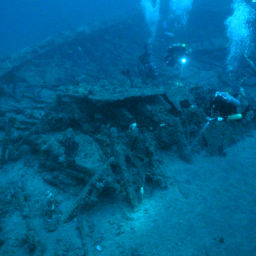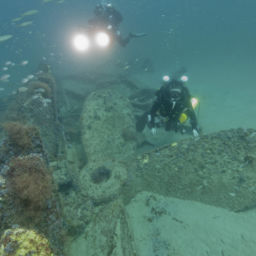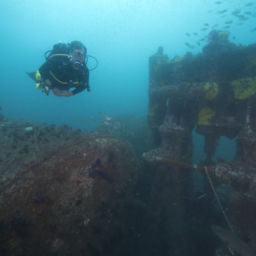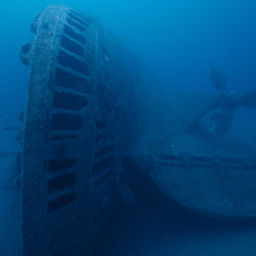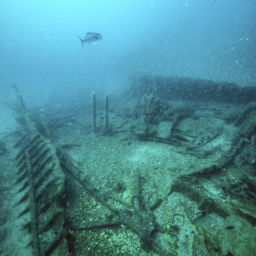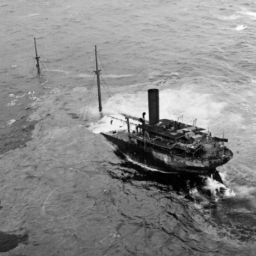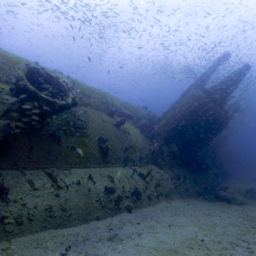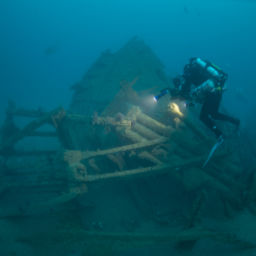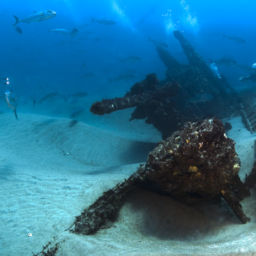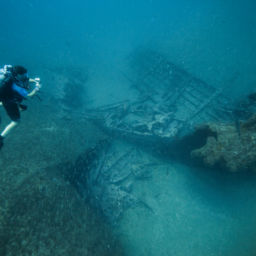For more than 40 years, national marine sanctuaries have worked to protect special places in America’s oceans and Great Lakes waters, from the Hawaiian Islands to the Florida Keys, from Lake Huron to American Samoa. Backed by one of the nation’s strongest pieces of ocean-conservation legislation, the National Marine Sanctuaries Act, the sanctuaries seek to preserve the extraordinary beauty, biodiversity, historical connections and economic productivity of our most precious underwater treasures. And — lucky for you — most of these places are accessible to recreational divers. Unique ecosystems fill sanctuary waters. These harbor a spectacular array of plants, animals and historical artifacts, all waiting to be explored. National marine sanctuaries belong to everyone, so dive in.

Monitor National Marine Sanctuary
Designated as our nation’s first national marine sanctuary in 1975, Monitor National Marine Sanctuary protects the remains of the historic USS Monitor. Although the wreck of this Civil-War-era ironclad ship rests 240 feet beneath the surface, NOAA has recently proposed an expansion of Monitor National Marine Sanctuary’s boundaries to include a collection of other nationally-significant shipwrecks, many of which are within recreational diving limits. There’s plenty of history to see in this area off the coast of North Carolina.
What makes the USS Monitor such an important shipwreck? Built during the American Civil War, Monitor was the Union’s first ironclad warship, ushering in the modern era of naval warfare. On New Year’s Eve, 1862, Monitor was traveling south when a fierce storm struck the coast of North Carolina. The ironclad endured devastating damage as it rolled from side to side in the heavy seas. Tragically, 16 brave crewmembers were lost their lives as the ironclad ship sank to the ocean’s depths, where it disappeared for more than a century until it was discovered in 1973.
Now, Monitor National Marine Sanctuary pays tribute to all the brave men who served on the USS Monitor, including those who lost their lives aboard the iron warship, and serves as a symbol of our nation’s desire to protect and preserve its underwater maritime heritage.



Monitor’s depth, as well as the strong currents surrounding the ship, make diving here challenging. Only certified and trained technical divers who obtain a private research permit — free of charge — can dive here. Still, Monitor is just one ship within the historic Graveyard of the Atlantic. With dramatic barrier islands and dangerous shoals and currents, the Outer Banks waters have entombed thousands of vessels and countless mariners. Today, scuba divers can visit wrecks dating from the Colonial Era to World War II. Streamline your gear and don’t touch the wrecks, so as to protect them for generations to come.
Since 2008, Monitor National Marine Sanctuary and its partners have worked to document many of these shipwrecks. Some of these could be protected by the proposed expansion mentioned above. Dive 55 feet below the surface to pay tribute to the cargo ship Ashkhabad as a loggerhead turtle drifts by. Encounter sand-tiger sharks as you descend 85 feet to the freighter Caribsea, or 90 feet to the oil tanker Dixie Arrow. Sanctuary expansion would guaranteed protection of this unique underwater museum of our nation’s maritime history.
Experience the wonders of Monitor National Marine Sanctuary and other national marine sanctuaries via our photos, and see more at sanctuaries.noaa.gov/earthisblue.
By guest writers Allison Randolph and Elizabeth Weinberg, NOAA Office of National Marine Sanctuaries.
Cover image credit: NOAA







